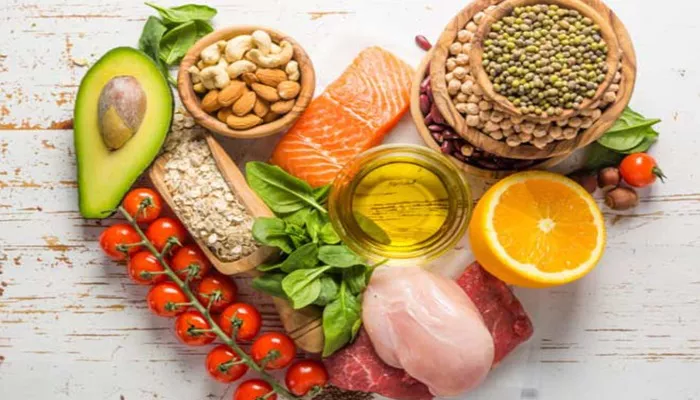Bradycardia, defined as a slower-than-normal heart rate—typically fewer than 60 beats per minute—can be a benign physiological response or a marker of underlying cardiovascular issues. While medical management may include observation, pacemakers, or pharmacological intervention, dietary strategy is an often-overlooked complementary measure in stabilizing and improving heart rhythm. This article explores the foods that support cardiovascular function in individuals with bradycardia, detailing nutrient mechanisms, food sources, and integration tips.
The Link Between Nutrition and Heart Rate Regulation
The heart’s rhythm depends heavily on the balance of electrolytes, autonomic nervous system control, and oxygenation. Essential nutrients—especially potassium, magnesium, calcium, omega-3 fatty acids, and antioxidants—play pivotal roles in cardiac conduction and cellular function. In bradycardia, maintaining optimal nutrition can support pacemaker activity, reduce inflammation, and prevent complications.
What Food Is Good for Bradycardia?
Potassium-Rich Foods
Potassium is critical in regulating the heart’s electrical activity. Hypokalemia may lead to arrhythmias, while optimal potassium levels support stable myocardial depolarization.
- Bananas
- Sweet potatoes
- Spinach
- Avocados
- Beans and lentils
Magnesium-Loaded Foods
Magnesium is essential for muscle contraction, including the myocardium. Deficiency may exacerbate bradycardia or cause palpitations.
- Almonds
- Dark leafy greens (kale, chard)
- Whole grains
- Pumpkin seeds
- Tofu
Omega-3 Fatty Acids
Omega-3s exhibit anti-inflammatory effects and enhance autonomic tone. They may stabilize resting heart rate and prevent rhythm disturbances.
- Fatty fish (salmon, mackerel, sardines)
- Chia seeds
- Flaxseeds
- Walnuts
- Seaweed
Calcium in Cardiac Conductivity
Calcium is essential for electrical conduction and muscle function. In bradycardia, maintaining calcium balance can prevent dysfunction.
- Dairy products (milk, yogurt)
- Fortified plant-based milks
- Bok choy
- Sardines (with bones)
- Figs
Antioxidants and Heart Protection
Oxidative stress worsens cardiovascular health. Antioxidants protect cells, reduce inflammation, and support vascular tone.
- Berries (blueberries, strawberries)
- Green tea
- Dark chocolate (moderate amounts)
- Tomatoes
- Broccoli
Hydration and Electrolyte Balance
Dehydration can lead to bradycardia by lowering blood pressure and affecting cardiac output. Electrolyte-enhanced hydration is essential.
- Watermelon
- Coconut water
- Low-sodium vegetable broths
- Herbal teas
- Cucumber-infused water
Foods to Avoid with Bradycardia
Excessive Sodium
While sodium is necessary, excess intake can aggravate hypertension and affect heart rate variability.
- Processed snacks
- Packaged soups
- Fast food
- Salted meats
Stimulants and Caffeine
Caffeine may temporarily increase heart rate but also cause heart rhythm instability in sensitive individuals. Use with caution.
- Coffee
- Energy drinks
- Black tea
- Cola-type sodas
Alcohol and Bradycardia
Alcohol can depress sinus node activity and lower heart rate, particularly in excess. Moderation is crucial.
- Limit to 1 drink/day for women
- Limit to 2 drinks/day for men
Sample Meal Plan to Support Bradycardia
Breakfast
Oatmeal with chia seeds, almond butter, blueberries, and a banana. Green tea or herbal infusion.
Lunch
Grilled salmon salad with spinach, avocado, tomatoes, pumpkin seeds, and olive oil vinaigrette. Coconut water on the side.
Dinner
Lentil stew with sweet potatoes, kale, carrots. Quinoa as a side. Fortified almond milk.
Snacks
Greek yogurt with figs, walnuts. Fresh watermelon slices. Handful of almonds.
Practical Tips to Integrate Heart-Friendly Foods
- Plan meals in advance with whole, unprocessed ingredients
- Read food labels to limit added sodium and sugar
- Use herbs like basil or turmeric for flavor over salt
- Keep hydrated consistently throughout the day
- Choose seasonal produce for antioxidant richness
Medical Considerations
Always consult a cardiologist or registered dietitian before making major dietary changes. In symptomatic bradycardia or those with pacemakers, specific restrictions or requirements may apply.
Conclusion
While bradycardia may be asymptomatic or physiological in some individuals, dietary management plays a key role in supporting cardiac health and preventing rhythm disturbances. Incorporating foods rich in potassium, magnesium, calcium, and omega-3s can enhance pacemaker stability and cellular function. Avoiding excess sodium, caffeine, and alcohol is equally vital. With personalized meal planning and medical guidance, nutrition becomes a powerful ally in managing bradycardia holistically.
Related topics:


